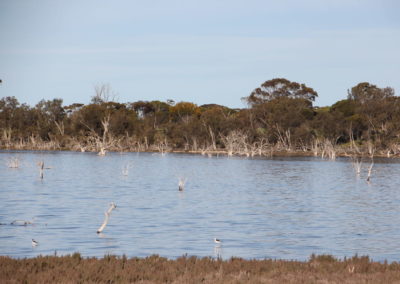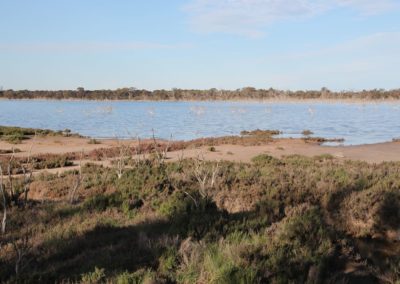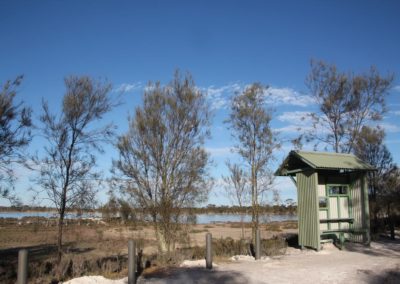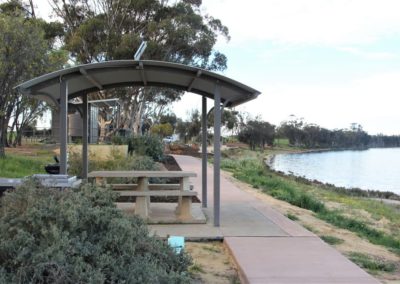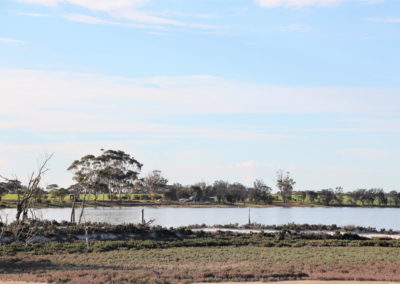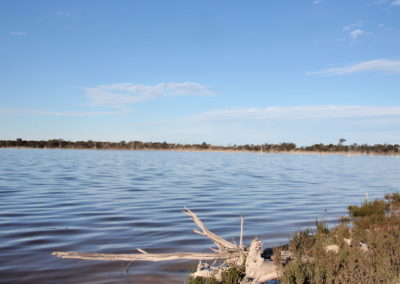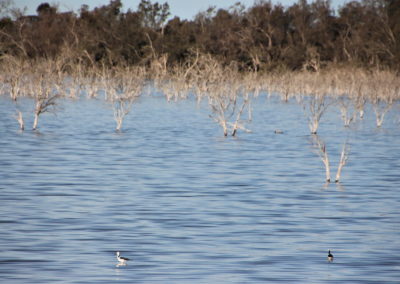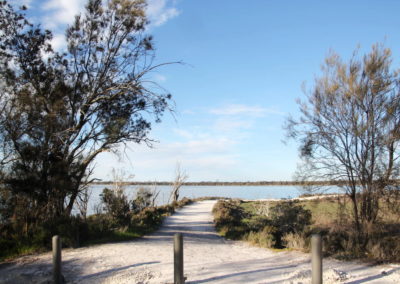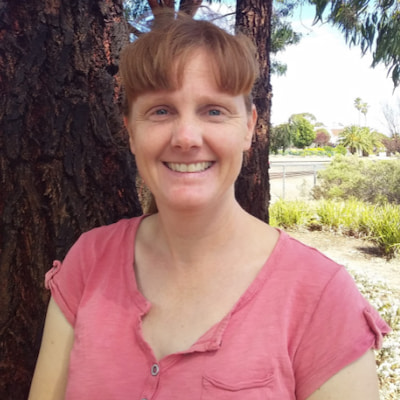-
Toilets Available
-
Disabled Access
-
Picnic Areas
-
BBQ Available
-
Mobile Reception (Telstra)
-
Camping Allowed
Overview
Located 18km east of Katanning on the Nyabing Rd is a treasured recreation site for the local community, as well as a haven for birds. This 100ha lake was brought back from the brink – formerly a hyper-saline, eutrophic mess – through dedication and lots of hard work by the local community.
Lake Ewlyamartup, like most lakes in the Wheatbelt, was once part of an ancient drainage channel.
It is still an important link in a chain of nature reserves and other lakes; even more crucial now as habitat for birds and animals because the surrounding landscape has mostly been cleared of its original vegetation.
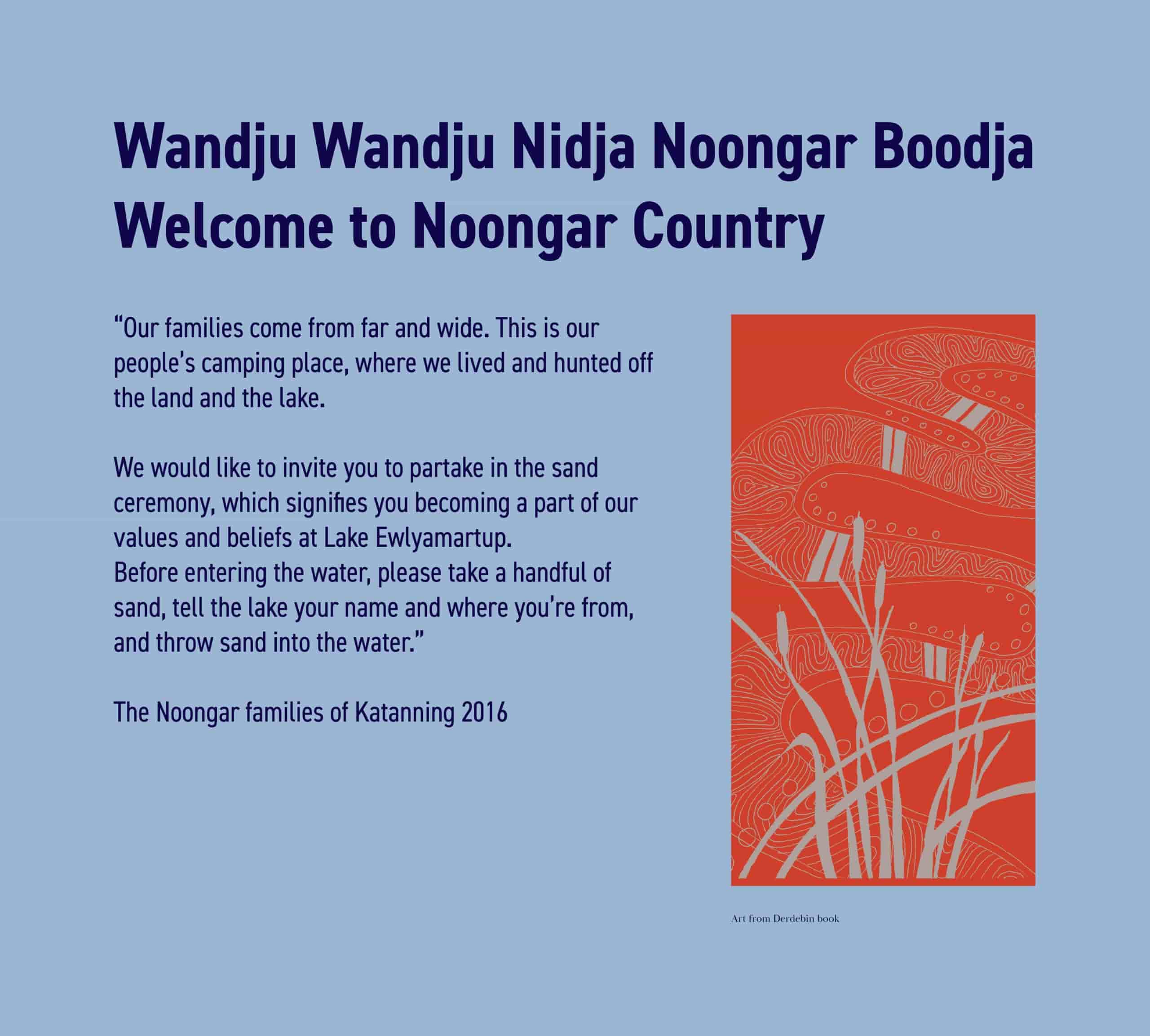
Originally a freshwater lake, this was an important place for the Goreng people of the Noongar nation. Archaeological investigations around the lake have found many artefacts, burial sites and other signs of long-time human habitation.
A freshwater lake in this relatively dry place was obviously attractive to the first European settlers too, and after colonisation, a small settlement was established here, eventually serviced by a small railway station.
In the early 20th century the lake was a beloved recreation site for the local community, and in the 1960s when the lake dried out, locals removed more of the vegetation to make it more suitable for water skiing.
However, by the early 21st century, one hundred years of agriculture began to take its toll and water quality in the lake collapsed.
The ongoing recovery of Lake Ewlyamartup is a remarkable story of community commitment and effort to bring a beloved place back from the brink.
Story of the place
Listen
Noongar Boodja
The traditional owners of Lake Ewlyamartup are the Goreng group of the Noongar nation, and this large expanse of once fresh water made it a valued place.
Goreng elder, Graham Eades, said in an interview with the Great Southern Herald:
“The lake used to be fresh water, our families would fish and hunt kangaroo at the lake … waterways were a big place for Noongars, due to the belief system it was where the sacred snake would live.”
Up until the 1960s, the lake was used as a swimming pool as the indigenous community were not allowed to use the town-based swimming facilities.
“When I was growing up in Katanning, we had to go for a swim at the lake as we weren’t allowed to at the pool, it was only for white people …we would ride our bikes out there,” Mr Eades said.
The whole lake is a registered Aboriginal site with many burial sites and artefacts found here. There is a sacred site near the lake, and a Dreaming story describes the formation of the lake.
The name Ewlyamartup relates to “place where there is a water hole associated with a leg”, and is associated with the important Dreaming story of Mulka.
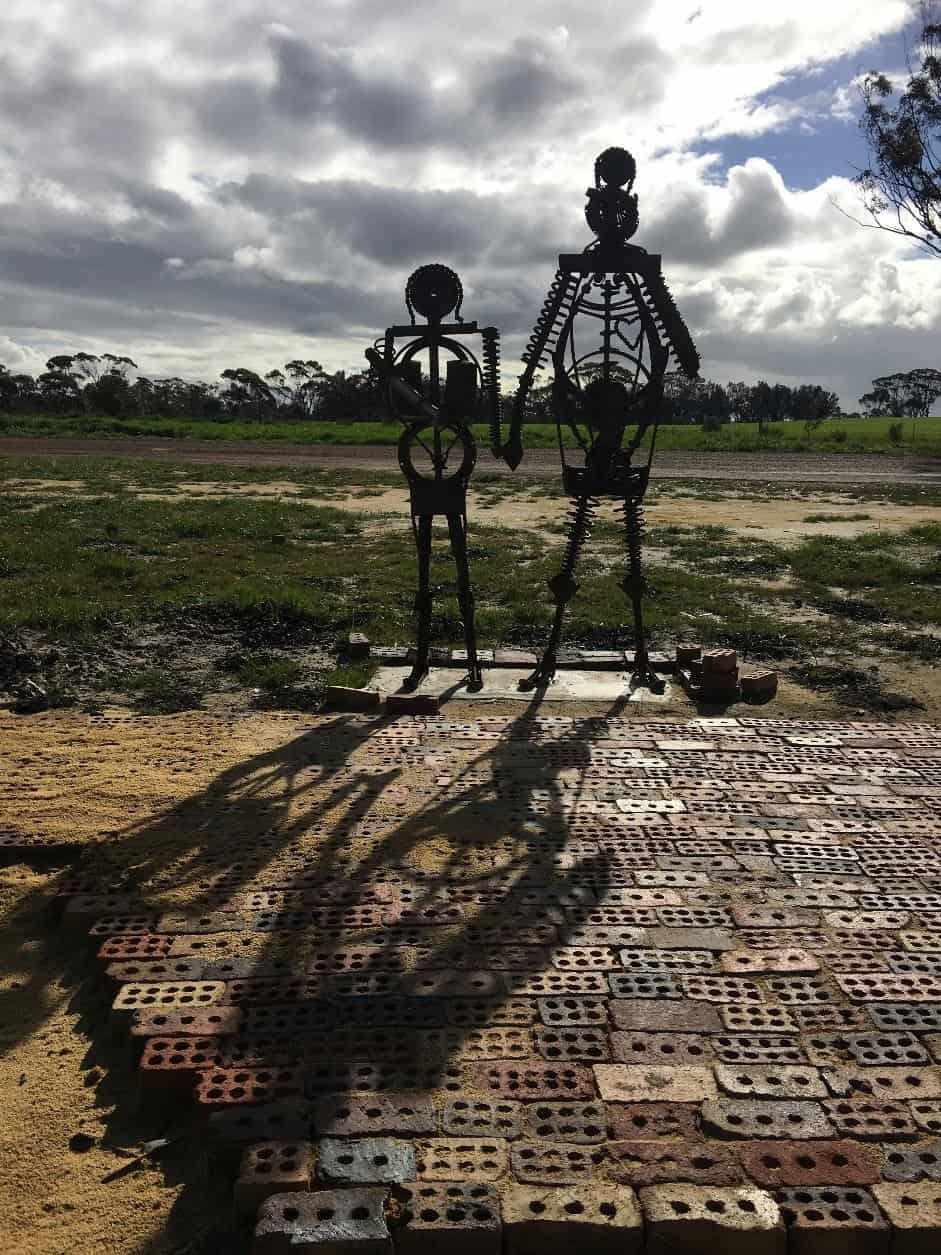
Image: IngridC-Curtin, CC BY-SA 4.0
The sculpture of the family at Lake Ewlyamartup was made in 2016, a project chosen by local Noongar representatives to create a beautiful and permanent acknowledgement on-site about Noongar connection to the Lake.
It was built by artist Voytek Kozlowski and local Noongar teenagers from the KSHS Clontarf Academy, using scrap agricultural parts.
The design recognises that the lake always has and always will be a place for families, and a nod to the shared path that European-descent farmers and Noongar people walk in the future care of Lake Ewlyamartup.
Remnants of an ancient river

Image: Google Maps
Satellite images clearly show the ancient drainage channels that are the remains of once enormous rivers running through this landscape.
Lake Ewlyamartup is a 100ha (1km long and 1km wide) remnant of the original river system.
Settler history
James Stirling and John Septimus Roe first explored the area in 1835 while travelling from Perth to Albany. Sandalwood cutters arrived in the 1870s and by 1889 European settlers were establishing farms in the region.
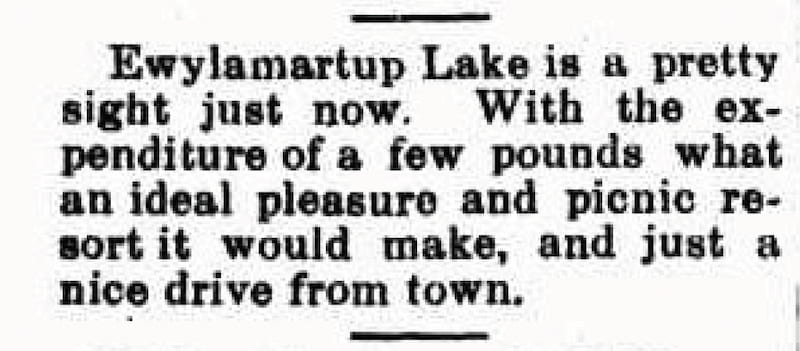
Gnowangerup Times, 17 December 1913
Early on there were many local cheerleaders for Ewylamartup Lake and the possibility of developing it into a ‘pleasure and picnic resort.’
The water must have been reasonably fresh at that time, for in 1912 a dam was constructed to conserve the water that remained for a water source for the small town and railway when lake levels dropped in summer.
Lake Ewlyamartup was one of the lakes stocked with perch (a freshwater fish) by the Fisheries Department, until the 1930s.
There were many reports of fishing, although concern was often raised when the lake invariably dried up in summer.
The lake and surrounds obviously stayed in a good condition for some time, with locals continuing to call for the development of the area into more of recreation spot throughout the 1920s.
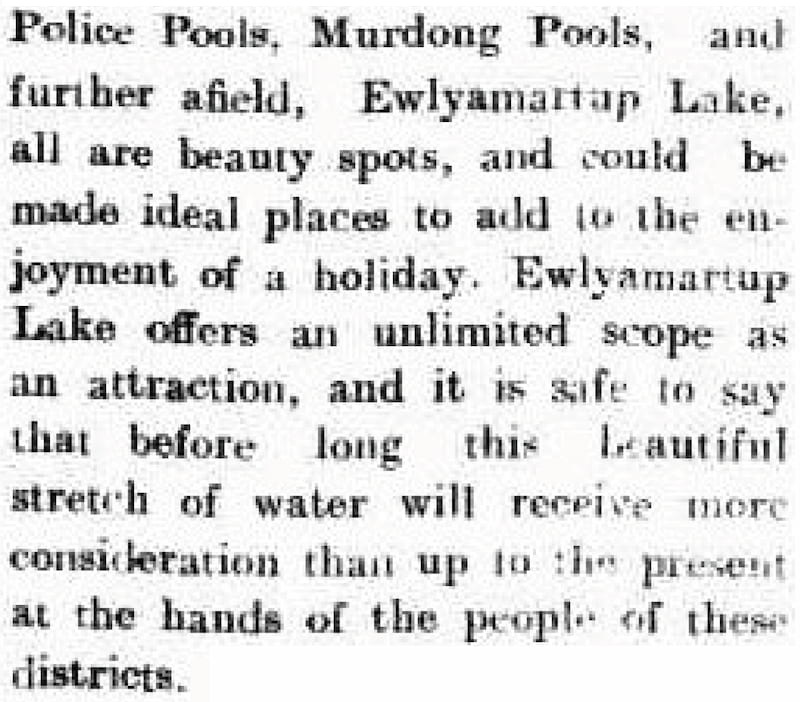
Tambellup Times, 3 December 1921
In 1963 when the lake dried out, locals cleared out all the vegetation to make it better for water skiing, and it became a centre for recreation for people in the district. But that loss of vegetation, and the broadscale clearing of vegetation in the surrounding catchment would eventually have an enormous impact on the lake.
Rising salinity levels
Like so many other lakes in the wheatbelt, Ewlyamartup has been badly impacted by the rising saline watertable created by the removal of the original vegetation. Runoff water from the catchment, which fills the lake most winters, turned saline.
The inundation by saline water caused the death of fringing wetland vegetation, evident in the dead tree ‘stags’ on the fringes of salt lakes in the region.

Image: Nicole Hodgson
Decline and restoration
The human impact on the surrounding landscape eventually took it’s toll on the lake.
Ella Maesepp
Katanning Landcare
“Because there was an inlet to the lake but no outlet, when the water evaporated it left behind salt, sediments and nutrient. By 2010 there was a total collapse of water quality. It was a stinky, yellow cesspool with three times the salinity of the ocean, and people had abandoned it.
But the community were determined to do something to rescue the lake and on World Wetlands Day 2010 there was a public meeting at the Lake, and the Lake Ewlyamartup Working Group was established.”
The way in which the Katanning community came together to rescue Lake Ewlyamartup is an inspiring story of a collective community landcare effort.
Led by Katanning Landcare and the Lake Ewlyamartup Working Group (LEWG), and supported by government, an enormous number of community volunteers worked for years to turn around both the environment and community perceptions of the Lake.

Lake Ewlyamartup before restoration
Image: Katanning Landcare
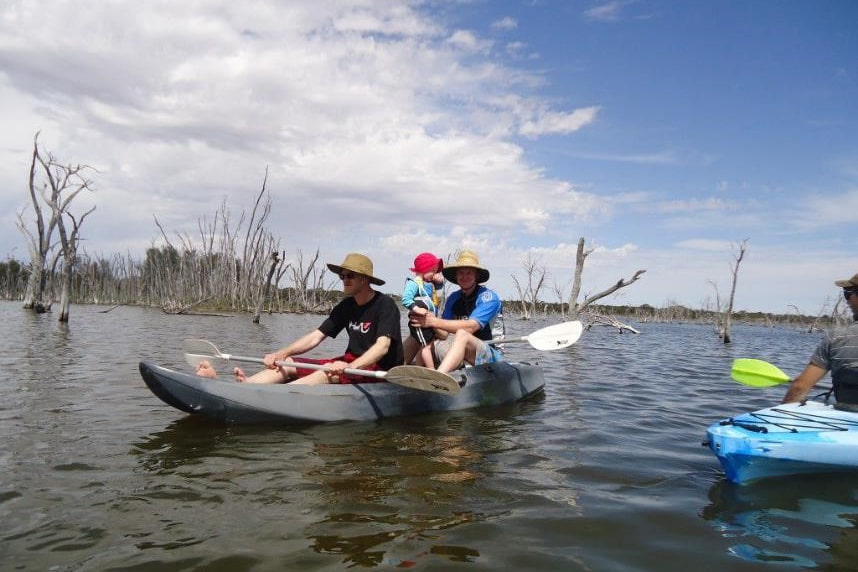
Lake Ewlyamartup after restoration
Image: Katanning Landcare
This large group of volunteers worked in the catchment to revegetate and reduce fertiliser runoff and they worked in and around the lake itself to remove the nutrient rich sludge, build a flushing channel and upgrade the recreational facilities.
Today, the Lake regularly sees families water-skiing, kayaking and picnicking, with overnight campers making use of the newly refurbished visitor facilities.
The flushing channel, located on the north-east side of the lake, allows poor quality “first flush” water to be removed from the lake in autumn and early winter, and then is closed to allow the lake to fill with the fresher winter flows. This will create a gradual improvement in the quality of water in the lake.
However, whether or not Lake Ewlyamartup fills depends on rainfall, and lake levels routinely drop as water evaporates over summer, so if you are visiting in late summer, expect Lake Ewlyamartup to be quite dry.
See & Do
A haven for birds
Lake Ewlyamartup is a large lake that often has water when other nearby wetlands have dried out, as well as extensive shallows, and so it is vital habitat for birds.
As many as 95 species have been spotted at the lake, including three priority species, eight migratory species and many species of waterbirds. One bird to particularly look out for:
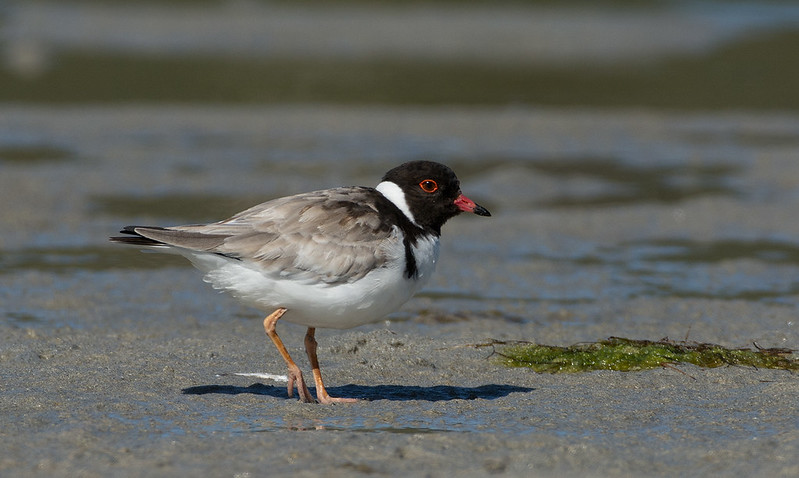
Image: John Anderson
The Hooded Plover breeds at Lake Ewlyamartup.
Conditions at the Lake favour this bird, including high salinity and the relative complexity of the shoreline which assists in camouflage and protection of nests.
Australia-wide this bird is vulnerable because of human impacts at many shoreline locations. So please do not take vehicles onto beaches at Ewlyamartup, and be careful where you walk as you could crush the ground-nesting eggs.
There is a bird hide at the south end of the lake, from where you can look out for some of the 95 bird species that have been spotted on and around the lake.
Find an illustrated bird list here:
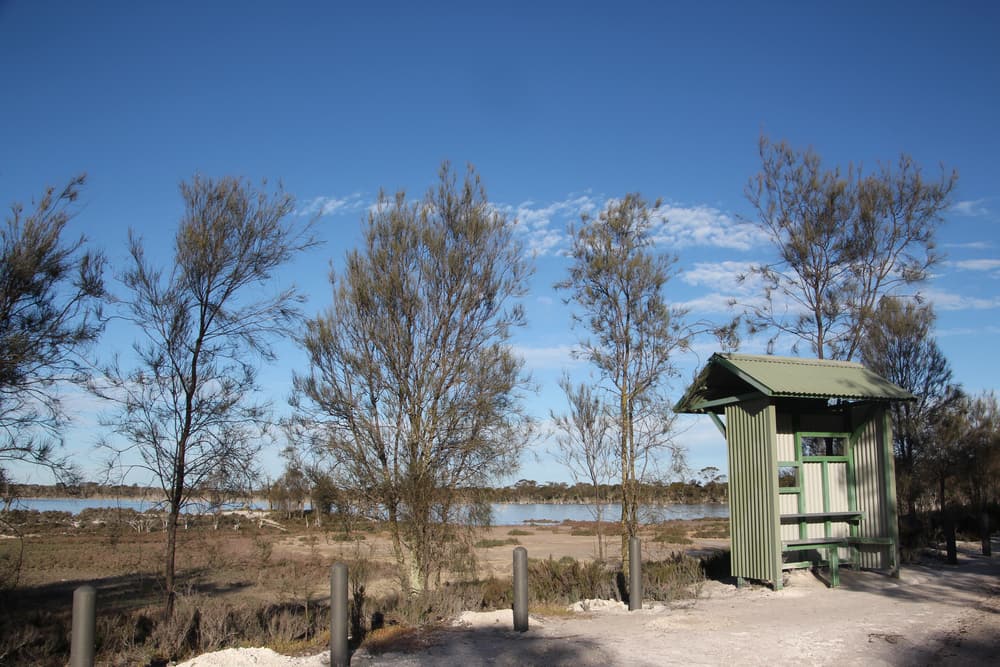
Plantlife
Although the fringing vegetation of the lake has been badly impacted by inundation and increased salinity of the water, the vegetation that remains is crucial habitat for animals, stabilises the shoreline, and acts as a filter against the input of sediments and nutrients from adjacent farms.
Species in the open woodland near the lake include:
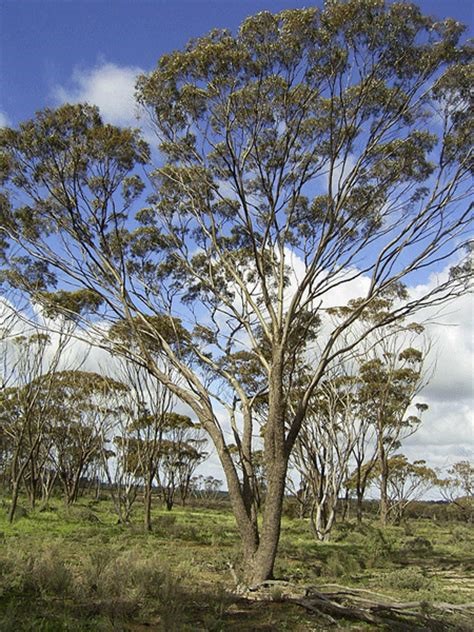
York Gum (Eucalyptus loxophleba)
Image: Katanning Landcare
York gum is one of the most common trees across the wheatbelt, noted for its association with fertile soils.
It is “a large mallee that behaves like a tree, and is able to disperse locally when rain wets the ground for extended periods.” (Nathan McQuoid, Lifting the Bonnet on Wheatbelt Woodlands)
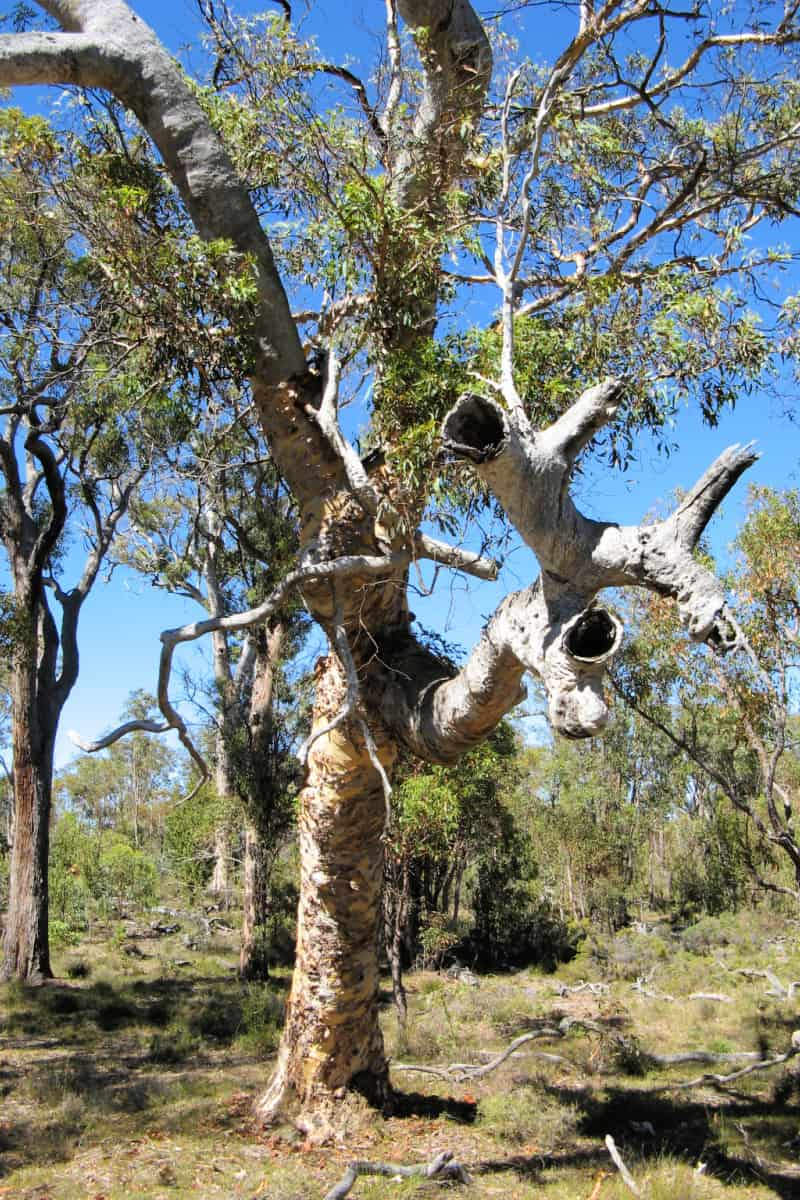
Wandoo (Eucalyptus wandoo)
Image: Jesse Brampton
Wandoo woodlands have been mostly cleared from the landscape, and so any remaining trees are vitally important. Older trees are particularly important habitat for a range of birds and animals – wandoos have been called nature’s boarding house. Carnaby’s cockatoos rely on old trees with hollows for breeding and nesting. Phascogales, possums, bats and birds utilise the upper branches and hollows of old trees.
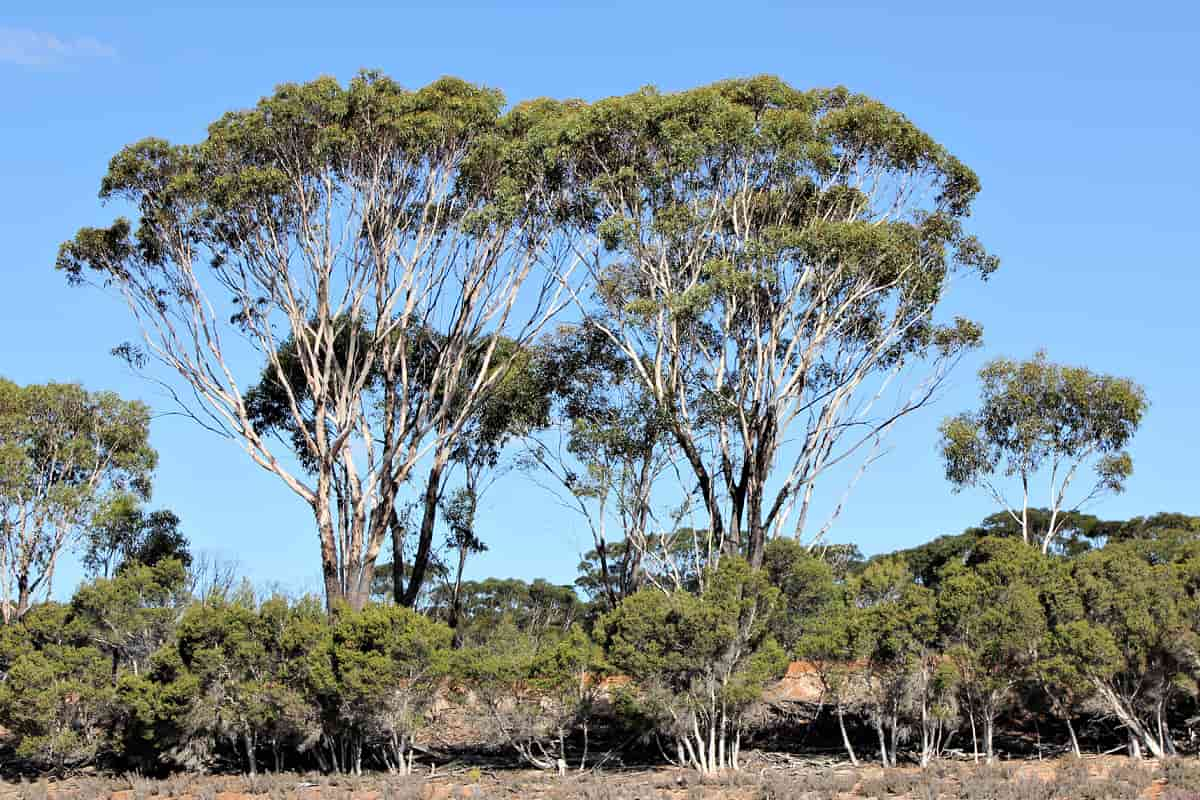
Swamp Yate (Eucalyptus occidentalis)
Image: Anne Rick
‘Occidentalis’ means western, which refers to the occurrence of the swamp yate in the west of Australia. It is common in alkaline clay soils, often around wetlands and watercourses, and winter-wet depressions.

Swamp Oak (Casuarina obesa)
Image: Anne Rick
Swamp oaks, as their name suggest, are often found along rivers, creeks and salt lakes. Their tolerance for salt means they are a popular species for agro-forestry in salt affected areas.
Samphire Flats
There are also extensive areas of Samphire flats (Tecticornia species) to the north of the lake extending into and through the Coblinine Nature Reserve.
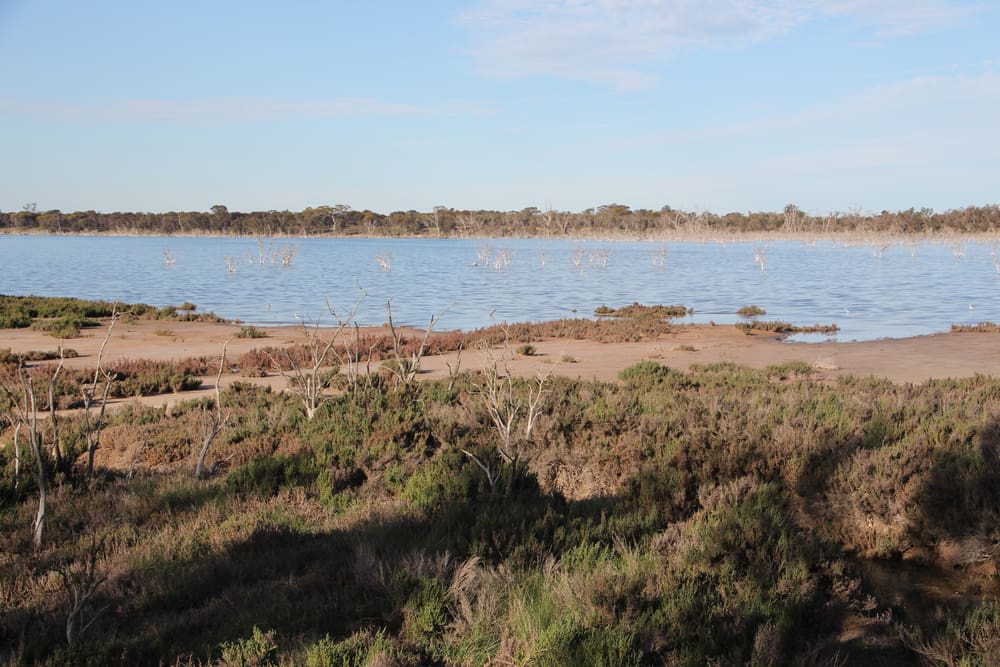
Walk trails
There are no formal walk trails around the lake, but from the vehicle entry to the lake there is:
- A paved path that runs to the north alongside the lake, connecting the barbecue & picnic areas, with interpretive signage along the path.
- A rough vehicle track that runs to the south-west corner of the lake, where a bird hide overlooks a small dam adjacent to the lake.
Pocket Guides
Two guides – Birds of Katanning and Wildflowers of Katanning – have been produced by Katanning Landcare. They are available for just $2 from the Katanning CRC, Katanning Landcare, Katanning Caravan Park and Lost Katanning.
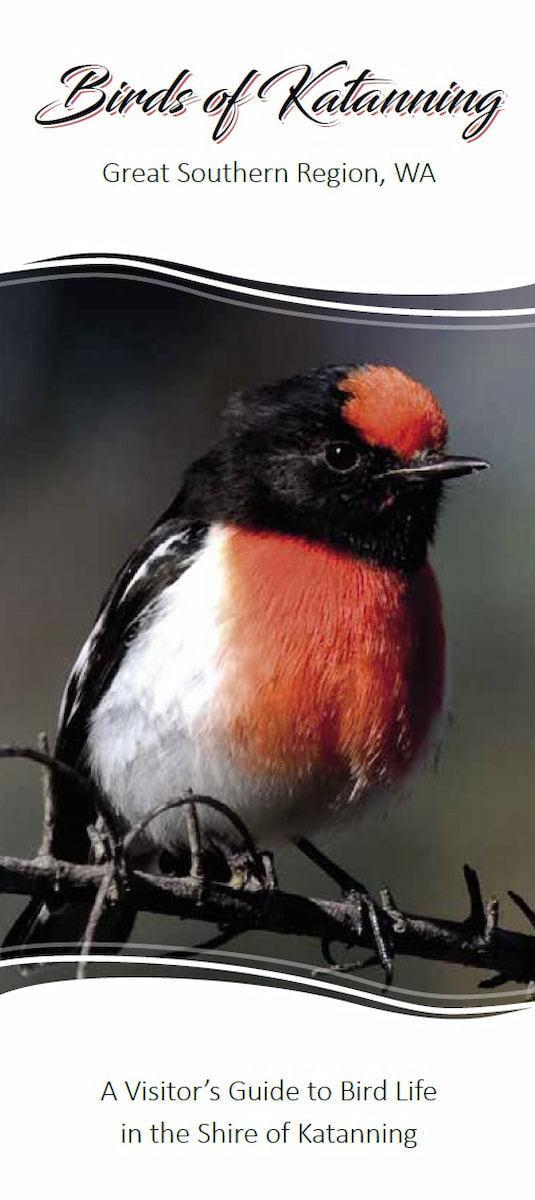

Citizen Science
Katanning Landcare and partners record community sightings of Carnabys Cockatoos and Red Tailed Phascogales.
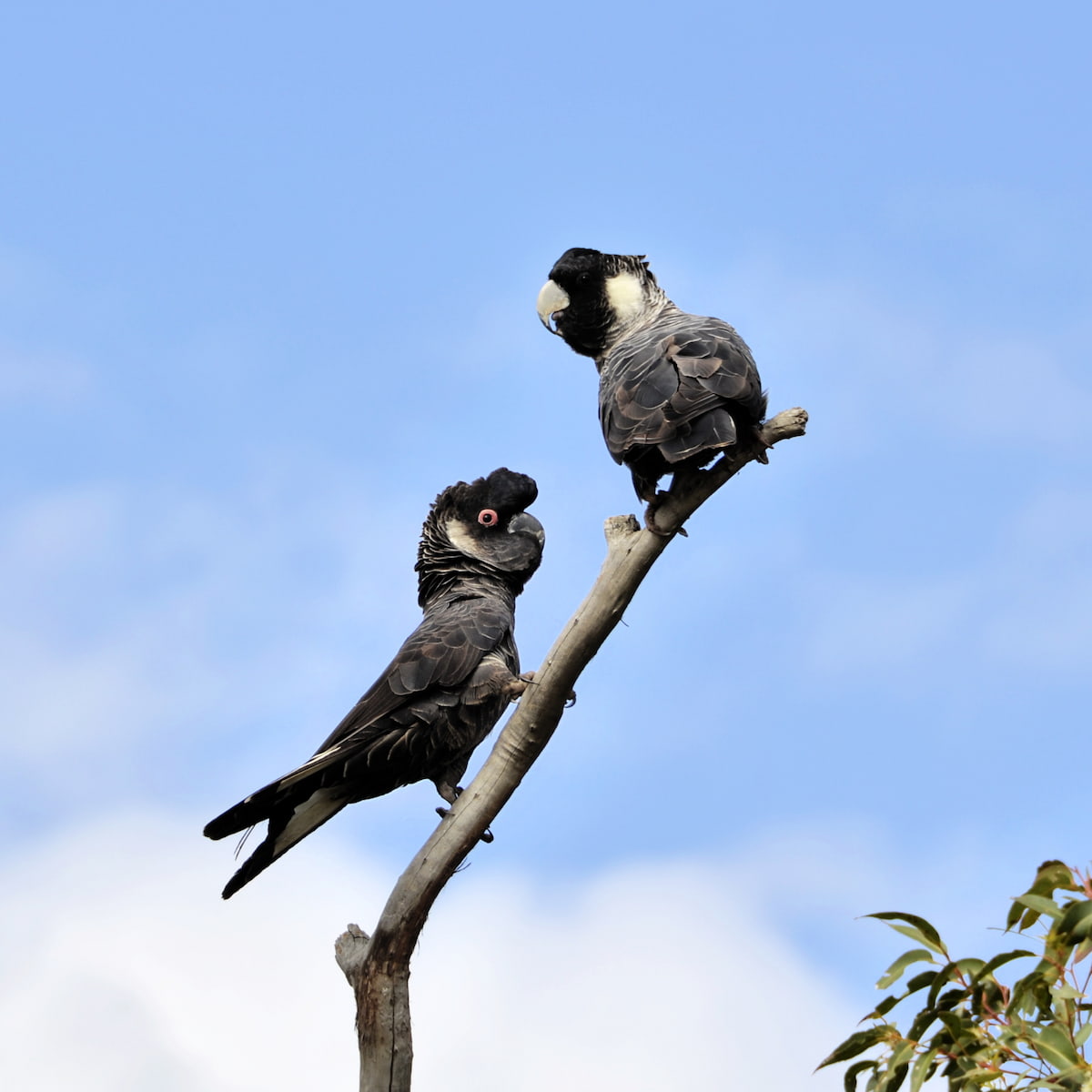
Carnaby’s Cockatoos
Image: Amanda Keesing
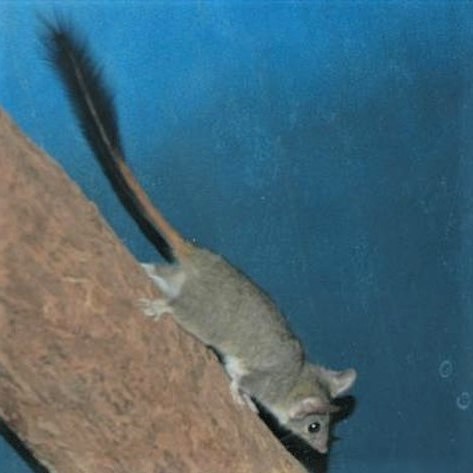
Red-tailed phascogale
Image: Interllectual – CC
If you see either of these species, please report the sighting to hello@katanninglandcare.org.au
On-ground action
Katanning Landcare are in the happy situation of completing most of the work in the Lake Ewlyamartup restoration plan. However, small projects might be run in the future – keep an eye on the Katanning Landcare Facebook page to find out more.
Giving back and getting involved

Katanning Landcare is committed to finding and implementing local solutions to global environmental problems. They focus on education, leadership and on-ground action. They rely on grants, sponsorship and donations. You can support their excellent work by making a tax-deductible donation at their website.
Practical Information
Camping and day use
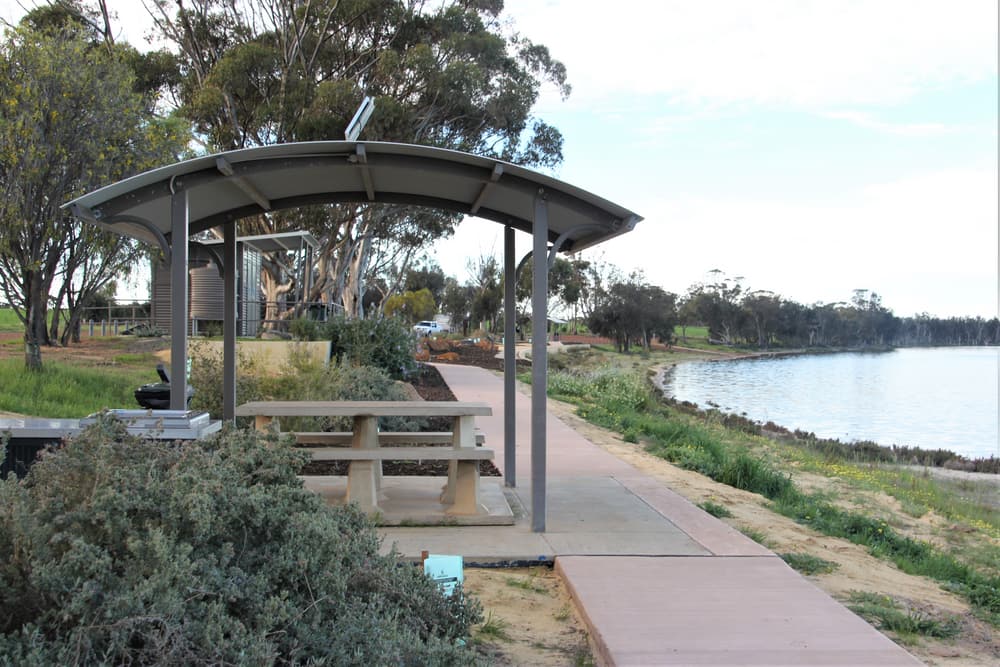
- 24hr self-contained camping
- No bins: please take your rubbish with you
- Access friendly toilets
- Picnic tables and seating
- Shelter
- BBQ
- Boat ramp
Closest towns
Katanning – 17km via Katanning-Nyabing Rd
Nyabing – 44km via Katanning-Nyabing Rd
Where to eat and stay
See the suggestions from our friends at Great Southern Treasures:
Visitor Information
“Wildflowers of Katanning” and “Birds of Katanning” are full colour booklets which can be purchased at the Katanning CRC, Katanning Landcare, Katanning Caravan Park and Lost Katanning for $2 each. These will be a useful accompaniment for visitors to Lake Ewlyamartup.

